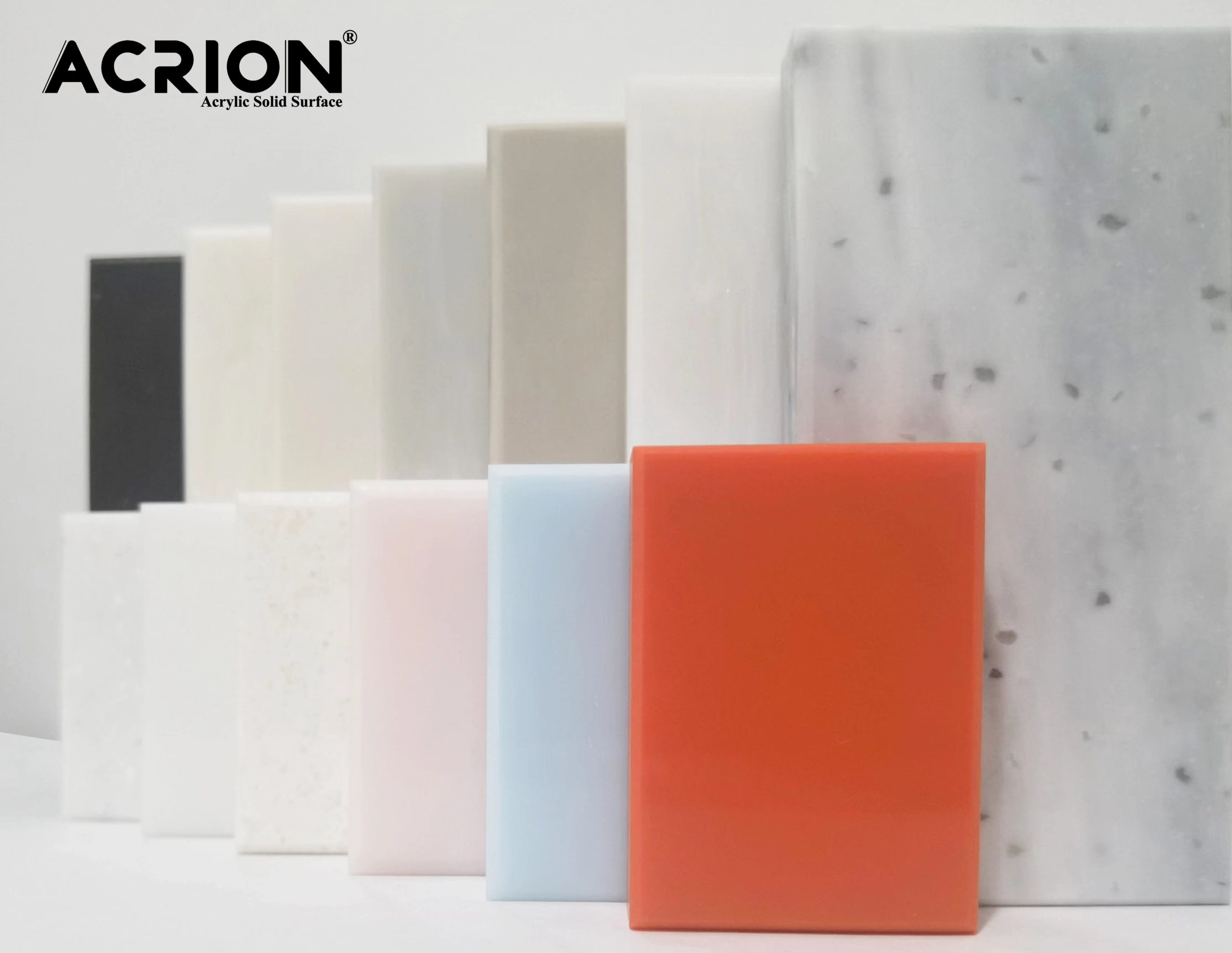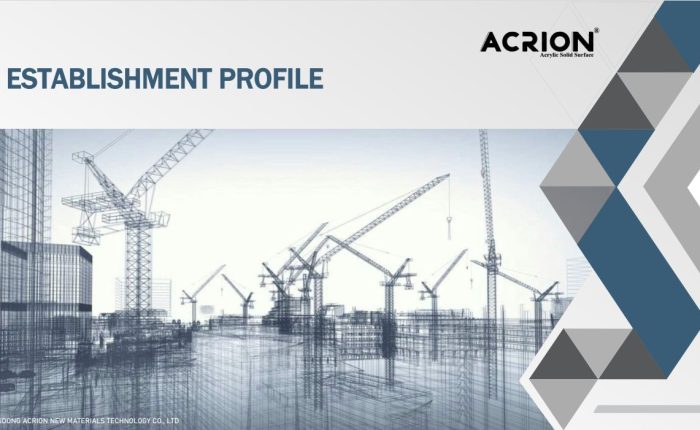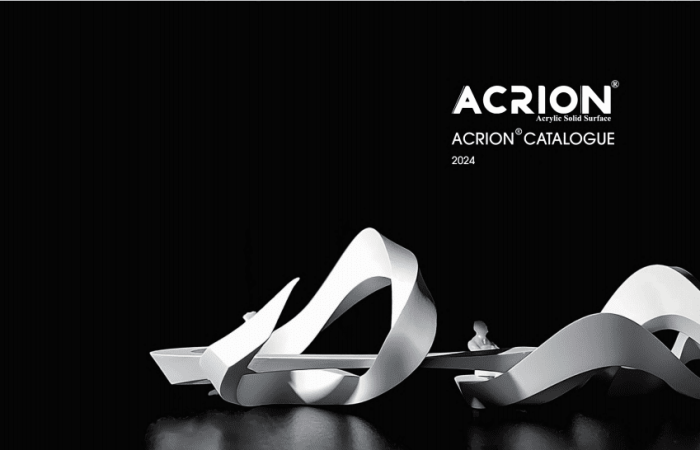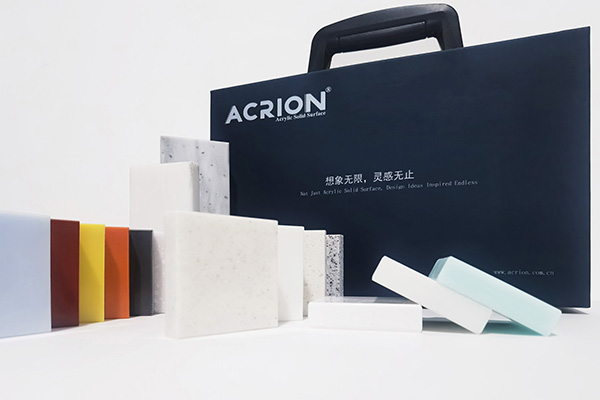Analysis of the Flexibility and Plasticity of Acrylic solid Surfaces
The flexibility and plasticity of the solid surface of acrylic acid are jointly influenced by the molecular structure of the resin, the curing mechanism and external conditions. The following analysis is conducted from three dimensions: material properties, influencing factors and application scenarios:
First, the sources and manifestations of flexibility
Molecular chain flexibility
The flexibility of acrylic resin mainly depends on the structure of the ester group (-COO-) and the alkyl group (-R) in the main chain. For instance, the introduction of long-chain alkyl groups (such as C8-C12) can increase the free volume of the molecular chain, lower the glass transition temperature (Tg), and thereby enhance flexibility. If flexible monomers (such as butyl acrylate) are introduced into the main chain, the coating can withstand 180° bending at room temperature without cracking. However, when the proportion of hard monomers (such as methyl methacrylate) is too high, the brittleness of the coating increases significantly.
The influence of crosslinking density
The dosage of crosslinking agents (such as diisocyanates and epoxy resins) directly affects flexibility. For example, when the crosslinking density is too high, the coating may break due to stress concentration during the bending test. Moderate crosslinking (such as a crosslinking degree of 30-50%) can balance hardness and flexibility, enabling the coating to maintain a certain hardness while having impact resistance.
Temperature dependence
The flexibility of the acrylic coating increases with the rise in temperature. For example, at -20℃, the coating may exhibit brittle fracture; At 60℃, its elongation at break can increase by 2 to 3 times. This characteristic requires that when used in low-temperature environments, the formula needs to be optimized (such as adding plasticizers) to maintain flexibility.
Second, the realization mechanism of plasticity
Thermoplastic processing
Incompletely cured acrylic resin can achieve plasticity through thermoplastic processing. For instance, at 120-150℃, the resin can be calendered, blow-molded or injection-molded, and retains its shape after cooling. This characteristic is applicable to the manufacturing of complex-shaped products (such as irregular-shaped decorative parts), but the processing temperature needs to be controlled to avoid thermal degradation.
Solvent-assisted shaping
The viscosity of the resin can be reduced and its plasticity enhanced by adding volatile solvents (such as ethyl acetate). For instance, when the solvent content is 20-30%, the resin can be coated or sprayed into a thin layer, and a dense coating is formed after the solvent evaporates. This method is applicable to large-scale construction (such as the exterior walls of buildings), but it is necessary to pay attention to the influence of the solvent evaporation rate on the flatness of the coating.
Light curing and reversible crosslinking
Some acrylic resins can be photocured by photoinitiators, while reversible cross-linking bonds (such as disulfide bonds and hydrogen bonds) are introduced to enhance plasticity. For example, under ultraviolet light irradiation, the resin can be cured and formed within seconds. Under the influence of heating or specific solvents, the crosslinking bonds can break, achieving secondary shaping. This feature is applicable to scenarios that require repetitive processing (such as 3D printing).
Third, the key factors influencing flexibility and plasticity
Composition of resin monomers
The ratio of soft monomers (such as ethyl acrylate and isooctyl acrylate) to hard monomers (such as methyl methacrylate and styrene) directly affects flexibility. For example, when the proportion of soft monomers exceeds 60%, the flexibility of the coating is significantly improved, but the hardness may be insufficient. When the proportion of hard monomers is too high, the coating is prone to cracking.
Plasticizers and modifiers
Plasticizers (such as dioctyl phthalate) can reduce intermolecular forces and enhance flexibility. For instance, adding 5-10% plasticizer can increase the elongation at break of the coating by more than 50%, but it may reduce its heat resistance and chemical resistance. In addition, the introduction of nano-fillers (such as silica and carbon nanotubes) can enhance flexibility and strength through physical cross-linking.
Curing conditions
The curing temperature and time have a significant influence on flexibility and plasticity. For instance, low-temperature curing (such as 40℃) may lead to incomplete crosslinking, resulting in a coating with good flexibility but insufficient hardness. High-temperature curing (such as 120℃) can accelerate the crosslinking reaction, increase hardness but may reduce flexibility. In addition, the flexibility of the UV-curable coating can be controlled by adjusting the concentration of the photoinitiator and the intensity of the light.
Fourth, the requirements for flexibility and plasticity in application scenarios
Architectural coating
Exterior wall coatings need to have a certain degree of flexibility to resist thermal expansion and contraction caused by temperature changes. For instance, in areas with a large temperature difference between day and night, the coating needs to have an elongation at break of 10-15% to prevent cracking. In addition, plasticity requires that the coating can evenly cover the surface of complex substrates (such as brick walls and stone).
Automobile coating
Components such as car bumpers need to be both flexible and malleable. For example, the coating needs to maintain flexibility within the range of -40℃ to 80℃, and at the same time be able to withstand minor impacts without peeling off. In addition, plasticity requires that the coating can adapt to the injection molding process and form a smooth surface.
3D printing materials
Uv-curable acrylic resin needs to be malleable to achieve printing of complex structures. For instance, the resin needs to cure rapidly under ultraviolet light while maintaining a certain degree of flexibility to prevent breakage during the printing process. In addition, the printed products need to have sufficient strength to withstand the usage load.
Fifth, strategies for enhancing flexibility and plasticity
Molecular design
Flexible segments are introduced through copolymerization or grafting modification. For instance, introducing polyether segments (such as polyethylene glycol methacrylate) into acrylic resin can significantly enhance flexibility while maintaining water resistance.
Composite modification
Blend acrylic resin with elastomers (such as nitrile rubber, polyurethane). For instance, adding 10-20% elastomer can increase the impact strength of the coating by 3-5 times while maintaining transparency.
Post-treatment process
Optimize the coating structure through heat treatment or solvent annealing. For example, heat treatment at 100℃ for 2 hours can release the internal stress of the coating and enhance its flexibility. Solvent annealing can promote the rearrangement of molecular chains and enhance plasticity.



